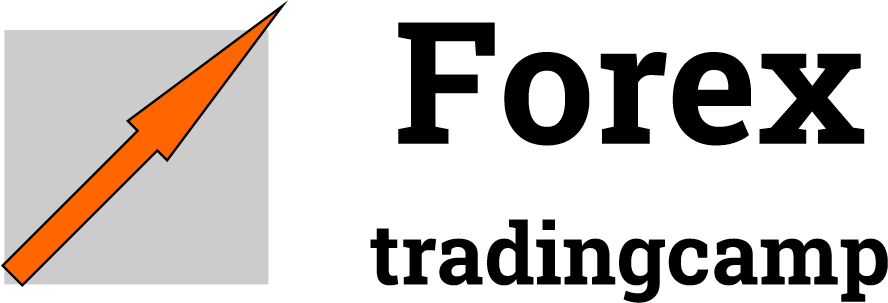
The medical device industry has emerged as one of the most dynamic and resilient sectors within global healthcare. For investment bankers, private equity firms, and institutional investors, medical technology means a client mix of stable demand, rapid innovation, and “high” barriers to entry. With the rise of healthcare expenditures, an aging population, and accelerating developments in technology, medical devices now reign supreme in healthcare finance.
This article will explore the investment banking landscape in medical devices, the current trends that drive growth, significant merger and acquisition activity, valuation drivers, and both challenges and opportunities facing the industry to move forward. This industry provides a unique opportunity for traders, investors, and market analysts to look at all aspects of a high-potential industry.
Medical Device Investment Banking Landscape
Medical device investment banking is a niche segment of healthcare finance that connects innovation to capital markets. Banks and advisory firms are assisting device manufacturers in raising capital to invest in medical technology, structuring strategic partnerships, and completing mergers and acquisitions.
Medical device investment banking will have to face strict regulatory environments, longer development cycles, and evidence-based adoption from healthcare professionals (not consumer-facing categories like investment in skincare or skincare and beauty products). However, medical devices have the potential for significant returns comparable to other consumer-facing products, especially after technologies become clinically accepted breakthrough technologies.
The landscape is shaped by:
- Global medtech leaders with multibillion-dollar market capitalizations.
- Mid-market innovators focusing on niche technologies like minimally invasive devices or diagnostics.
- Startups backed by venture capital and private equity, aiming to disrupt segments such as robotic surgery or digital health.
Investment banks play a critical role in advising these players, structuring capital-raising strategies, and connecting innovators with strategic buyers.
Market Trends Shaping Medical Device Investment Banking
Growth in Minimally Invasive and Robotic Surgery Devices
One of the strongest growth momentum for medtech is its movement toward minimally invasive procedures. Patients and providers favor the outcomes of reduced length of stay, risk, and faster recoveries. Devices that provide robotic assistance such as Intuitive Surgical’s perceived-innovative platform have entered mainstream medical markets in urology, orthopedics, general surgery, and other surgical specialties.
For investment bankers and private equity firms, the transition toward minimally invasive solutions in medtech creates opportunities for capital raising and acquisitions as demand from hospitals helps drive the company’s revenue growth.
Digital Health Integration and Connected Medical Devices
The convergence of digital health and medical technology is changing the delivery of care. Medical devices and therapies are increasingly embedding into cloud-based platforms for remote patient monitoring, artificial intelligence-enhanced diagnostics, and telehealth, in the unstructured world of care delivery. In addition to more successful patient care outcomes, connected medical device categories provide recurring revenue opportunities for device companies through ongoing monitoring and other data services.
It is interesting to observe the parallels of this movement towards connected massively scaled devices to the transition for consumers in the skincare market size away from visiting a professional, to leveraging at-home skincare tools, and/or engaging in data-driven skin health regimen, similar to health facilities that are adopting mass-sized connected medical devices for monitoring an individual patient.
Regulatory Shifts Driving Capital Allocation
Global regulatory entities are adapting to weigh innovation against patient safety. The FDA has a pathway for new devices in the U.S. to receive faster approval for breakthrough devices and the EU is putting stricter compliance regulations in place under MDR (Medical Device Regulation).
These changes are affecting investment banking activity. When companies are granted early regulatory clearance, they receive higher valuations than if they are held up in the approval process.
Globalization and Cross-Border Healthcare Transactions
Healthcare globalization is gathering steam. Strategic buyers from Asia and Europe have become more active in acquiring U.S. medtech startups and U.S. buyers are seeking to get access to fast-growing consumer markets in the Asia-Pacific region. Therefore, investment bankers must navigate cross-border tax, regulatory and cultural considerations in structuring a deal.
Key M&A Deals and Financing in the Medical Device Sector
Landmark Mergers and Acquisitions in Medtech
The medical device sector has witnessed some of the largest healthcare M&A deals. Examples include Medtronic’s $50 billion acquisition of Covidien and Abbott’s $25 billion purchase of St. Jude Medical. These transactions highlight how strategic consolidation remains central to growth strategies.
For traders, these mega-deals create volatility in beauty stocks-like fashion, where investor sentiment often shifts based on whether acquisitions are deemed value-accretive.
Private Equity and Venture Capital Participation
Private equity funds and venture capital firms remain vital in early- and mid-stage device financing. Just as firms are investing in beauty industry disruptors with new clean beauty trends, they are equally drawn to medtech startups with scalable innovations and strong intellectual property portfolios.
Growth equity also plays a major role: capital injections help manufacturers expand into new markets or scale manufacturing capabilities.
IPOs and Public Market Activity in Medical Devices
The IPO window for medtech has historically been cyclical, but investor appetite remains robust for companies demonstrating both revenue traction and regulatory approvals. Recent medtech IPOs have drawn comparisons to the strong run-ups seen in invest in beauty equities, where brand-driven innovation fuels high multiples.
Valuation Drivers in Medical Device Investment Banking
Revenue Growth and Market Penetration Potential
Revenue expansion remains the most direct valuation driver. Devices addressing large addressable markets, such as cardiovascular implants or diabetes monitoring systems, attract premium valuations due to their scalability.
Innovation, Patents, and Technology Pipelines
Intellectual property is the lifeblood of medical device valuations. Strong patent portfolios protect against competition and provide long-term revenue visibility.
This parallels the innovation-driven value of retinol, sunscreen, and vitamin C serum for face in the beauty market—where differentiation through technology or formulation justifies premium pricing.
Regulatory Approvals and Compliance Landscape
FDA and CE approvals provide credibility and de-risk investment. Companies with accelerated approvals gain faster access to capital and acquisition interest.
Reimbursement and Healthcare Economics Impact
Beyond regulatory approval, payor reimbursement is critical. Devices that secure favorable reimbursement codes often achieve rapid adoption, making them more attractive to investors.
Competitive Positioning and Market Share Dynamics
Market share within high-growth segments dictates competitive advantage. Companies that dominate niche categories often command outsized valuations relative to their revenue base.
Challenges and Opportunities in Medical Device Investments
Challenges
- Regulatory hurdles and FDA approval timelines: Prolonged review cycles delay revenue realization.
- Rising R&D and manufacturing costs: Innovation is capital-intensive, often exceeding budgets.
- Competition from large medtech incumbents: Smaller players face challenges defending market share against industry giants.
Opportunities
- Expanding aging population and chronic disease prevalence: Demographic trends underpin long-term demand.
- Emerging markets and global healthcare adoption: Asia-Pacific and Latin America offer double-digit growth opportunities.
- AI, robotics, and personalized medicine innovations: These next-gen technologies open new categories, similar to the rise of exfoliating serum innovations in the consumer skin care sector.
Regional Outlook for Medical Device Investment Banking
Dynamics of the U.S. Market
The U.S. continues to be the largest medtech market with superior healthcare infrastructure, high levels of R&D investment and strong capital markets. Investment banks in the U.S. lead the world with the most IPOs and strategic consolidation.
Investment trends in Europe
Europe is now subject to more strict regulation by the MDR, which has created delays in the approval process. However, due to its high quality engineering and commitment of strong academia-medical partnerships, Europe remains a global competitor.
Asia-Pacific Opportunities for Growth
Asia-Pacific is the fastest growing area with increased government stipends and healthcare expenditures. The region’s appetite for medtech products reflect the growing demand for innovation seen in the clean beauty consumption trends by younger consumers.
Emerging Markets in Latin America and the Middle East
These regions are quickly entering the adoption phase for essential medical devices, primarily diagnostics and surgical devices. Investment banks are beginning to provide advisory service for cross-border partnerships and to tap into these emerging markets.
Competitive Landscape in Medical Device Investment Banking
- Leading investment banks active in medtech: Goldman Sachs, J.P. Morgan, Morgan Stanley, and Bank of America dominate large-cap advisory.
- Boutique advisory firms specializing in healthcare deals: Firms such as Cain Brothers and Crosstree Capital carve out niches in middle-market transactions.
- Comparison of strategies across major players: Bulge-bracket banks focus on mega-cap transactions, while boutiques excel in specialized, founder-led medtech deals.
Frequently Asked Questions (FAQ)
What is contributing to M&A activity in the medical device sector?
There are a legitimate need for scale, access to innovation, and global footprints driving M&A activity. Strategic acquirers want to diversify portfolios and accelerate exposure to the fastest growing therapeutic areas.
How do investment bankers typically value medical devices?
Various elements contribute to valuations including, revenue growth and ramp-up time to market, market penetration, intellectual property, regulatory status, and reimbursement outlook. Re-financing similar M&A transactions and discounted cash flow models are the most utilized strategies.”
Which medtech segments are attracting the greatest sum of investors capital?
Robotics, cardiovascular devices, diagnostics, and digital health categories are among the hottest segments of the moment. These elements for investment are congruent with investor enthusiasm more broadly for consumer categories of at-home treatments, and gentle cleanser innovations.
What risks should investors be aware of in this sector?
Not surprisingly, key risks include regulatory delays, reimbursement uncertainty, high R&D costs, and competition from larger players in the segment.
Conclusion: The Future of Medical Device Investment Banking
Medical device investment banking is positioned for sustained growth. With demographic tailwinds, accelerating innovation, and globalization of healthcare, the sector offers compelling opportunities for traders and long-term investors alike.
Just as investors monitor the skincare market for clean beauty trends and emerging consumer brands, they must closely watch the medtech industry’s technological breakthroughs and capital market activity.
Whether evaluating IPOs, M&A opportunities, or private equity deals, investment bankers and investors alike must balance innovation potential against regulatory and financial risks. The long-term outlook remains highly attractive, making medtech one of the most promising frontiers in healthcare finance.And for investors accustomed to analyzing sectors as diverse as beauty stocks, investment skincare, or even searching for the nearest aesthetic clinic near me, the same principles apply: disciplined valuation, careful risk management, and a clear understanding of market dynamics will continue to separate winners from underperformers.
